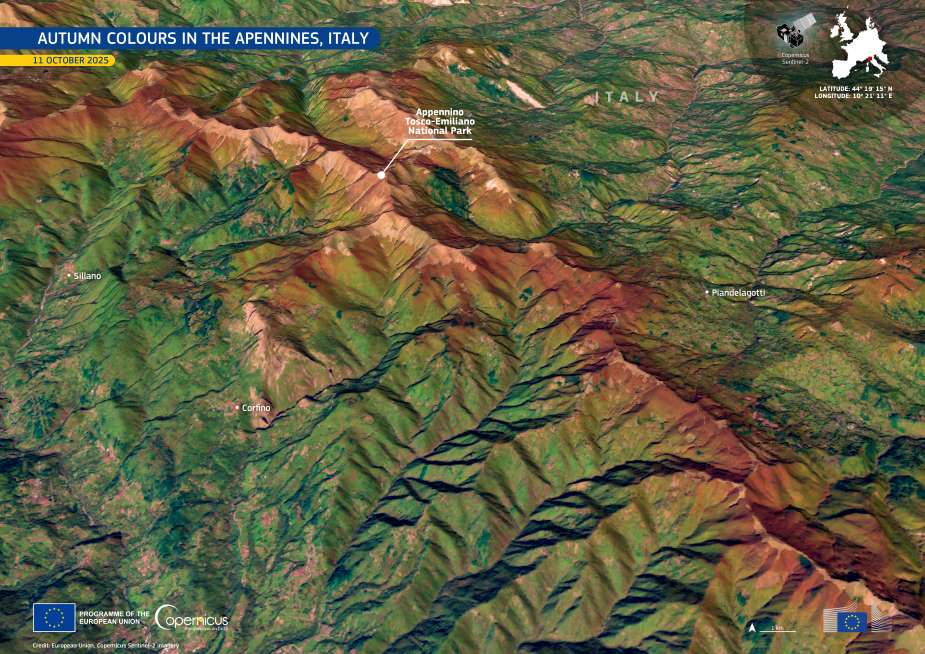As autumn takes hold across central-northern Italy, the Apennine mountains come alive with a display of deep greens, golden yellows, and warm reds. The shifting colours trace the natural rhythm of the season, as forests respond to cooler temperatures and shorter days. In this time of transition, the Apennines reveal both their beauty and their ecological importance – a reminder of how closely life in these highlands is tied to the changing climate.
This Copernicus Sentinel-2 image, acquired on 11 October 2025, shows the hills and valleys between the Tuscany and Emilia-Romagna regions, where the Tuscan-Emilian Apennine National Park stretches across more than 26 000 hectares. The landscape includes dense beech, fir, and oak forests, along with meadows and alpine ridges that support a rich variety of plants and animals. Wolves, deer, and golden eagles inhabit these slopes, where the balance between forest cover and open land helps sustain biodiversity.

Autumn offers a particularly vivid view of how forest ecosystems function. As deciduous trees lose their leaves, nutrients return to the soil, supporting microorganisms that form the foundation of the region’s ecological web. The diversity of species in these forests contributes not only to their visual splendour but also to their resilience against drought, pests, and other stressors that are increasing with climate change.
Copernicus provides key data for monitoring forest health and environmental changes, helping to track vegetation dynamics, support forest management and biodiversity conservation, and facilitate climate adaptation. Sentinel-2 satellites deliver detailed imagery that enables scientists to assess the effects of seasonal variation, detect disease outbreaks, and understand how forests store and release carbon.
In Italy, such data are increasingly valuable as warming trends alter precipitation patterns and affect mountain ecosystems. Programmes guided by Copernicus information are supporting local and national efforts to maintain forest health, restore degraded areas, and strengthen the role of these ecosystems in mitigating climate impacts. The Tuscan-Emilian Apennine National Park stands as an example of how natural beauty and scientific monitoring come together to protect landscapes that are both fragile and vital to Europe’s environmental balance.
Featured image credit: European Union, Copernicus Sentinel-2 imagery



